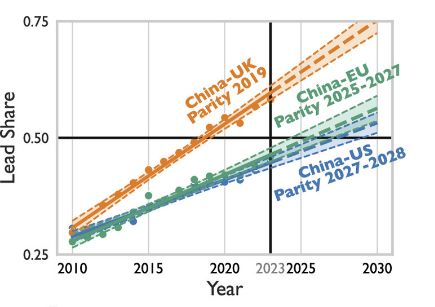

#AI #ArtificialIntelligence #LLMs #ChatGPT #NeuralNetwork #DataCenter

#AI #ArtificialIntelligence #LLMs #ChatGPT #NeuralNetwork #DataCenter
Explore the PNAS Nexus Ocean Studies collection: https://ow.ly/aWnK50XrKrI

Explore the PNAS Nexus Ocean Studies collection: https://ow.ly/aWnK50XrKrI



#BuiltEnvironment #RiskAssessment #ClimateChange #LandManagement

#BuiltEnvironment #RiskAssessment #ClimateChange #LandManagement



For more trending articles, visit https://ow.ly/cbLB50Xr3f0.

For more trending articles, visit https://ow.ly/cbLB50Xr3f0.

#SiblingRivalry #DevelopingCountries #DevelopedCountries #EconomicDownturn #CropPriceIndex

#SiblingRivalry #DevelopingCountries #DevelopedCountries #EconomicDownturn #CropPriceIndex



For more trending articles, visit https://ow.ly/5axv50Xq2zE.

For more trending articles, visit https://ow.ly/5axv50Xq2zE.



In Smithsonian Magazine: https://ow.ly/vGV750XpsR9
In PNAS: https://ow.ly/jO4K50XpsA6

In Smithsonian Magazine: https://ow.ly/vGV750XpsR9
In PNAS: https://ow.ly/jO4K50XpsA6

#AI #ArtificialIntelligence #LLMs #ChatGPT #NeuralNetwork #DataCenter

#AI #ArtificialIntelligence #LLMs #ChatGPT #NeuralNetwork #DataCenter

#plastics #VOCs #AirPollution #ClimateChange #benzene #acetone

#plastics #VOCs #AirPollution #ClimateChange #benzene #acetone
Explore the Human, Urban & Technological Networks Collection in PNAS Nexus—research across #biology, #engineering & #socialsciences revealing how #connectivity shapes our world: https://ow.ly/JLPY50Xoqxk
#Science #Research

Explore the Human, Urban & Technological Networks Collection in PNAS Nexus—research across #biology, #engineering & #socialsciences revealing how #connectivity shapes our world: https://ow.ly/JLPY50Xoqxk
#Science #Research

